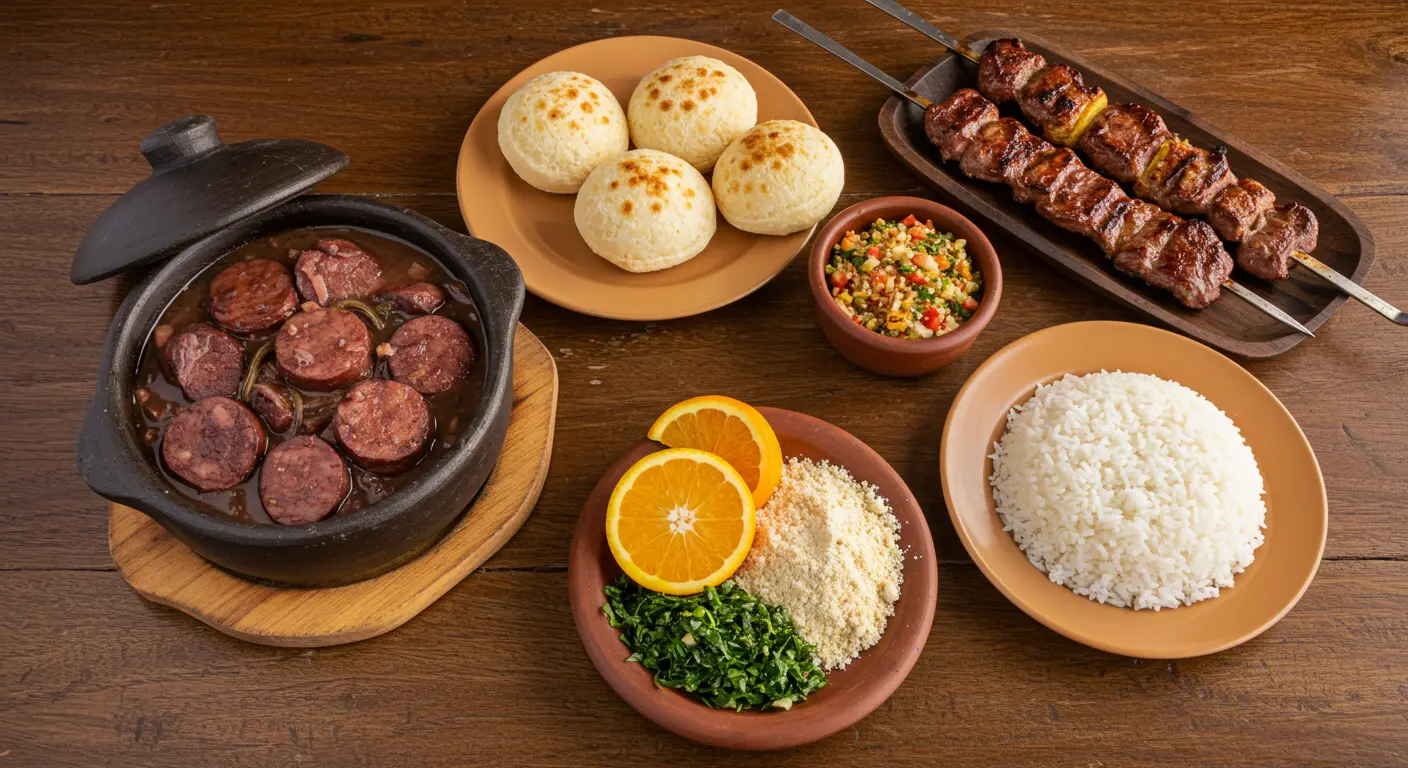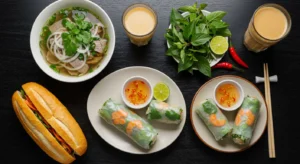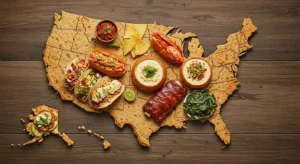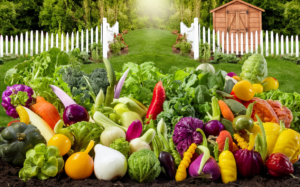Table of Contents
A Beginner’s Guide to the Irresistible World of Brazilian Food
You’ve probably seen the vibrant pictures: skewers of sizzling meat carved tableside at a churrascaria, a bubbling pot of black bean stew, or a colorful bowl of açaí. Brazilian food is a feast for the eyes, but what exactly is it? Is it just picanha and caipirinhas?
Well, let me tell you, it’s so much more. Brazilian cuisine is a thrilling story—a tale written in the ingredients of its indigenous people, spiced by African traditions, and shaped by European influences. It’s a cuisine of bold contrasts and comforting staples, where a single dish can tell you about centuries of history.
If you’ve ever felt intimidated by a Brazilian menu or wondered where to even begin, you’re in the right place. Consider this your friendly, no-stress passport to the incredible flavors of Brazil. We’re going to move beyond the stereotypes and dive into the heart and soul of what makes this country’s food so unforgettable.
The Soul of the Kitchen: The “Holy Trinity” of Brazilian Flavors
Before we get to the specific dishes, you need to understand the foundation. Just like French cuisine has its mirepoix and Cajun cooking its “holy trinity,” Brazilian food is built on a few essential pillars. Get to know these, and you’ll start to recognize the signature tastes in everything.
- Rice and Beans (Arroz e Feijão): This isn’t just a side dish; it’s the daily heartbeat of the Brazilian meal. The rice is typically long-grain and lightly sautéed with garlic and onion before boiling, giving it a subtle, savory depth. The beans are most commonly black beans or brown beans (carioca beans), cooked slowly into a creamy, flavorful broth. Served together, they create a complete protein and a comforting base for almost any meal.
- Farofa: This one might be new to you. Farofa is toasted cassava (manioc) flour, typically cooked with butter, onions, and sometimes bacon, eggs, or olives. It has a unique, slightly crunchy, nutty texture. Brazilians sprinkle it over virtually everything—from the rice and beans to the main course. It’s a brilliant textural element that soaks up sauces and adds a toasty flavor.
- Pimenta (Hot Sauce): Don’t worry, it’s not about extreme heat. Brazilian use of peppers is more about adding a bright, vinegary kick. A few drops of a homemade molho de pimenta or a brand like Maria Mole can lift a rich stew or a simple plate of beans to new heights. It’s about flavor, not just fire.
A Culinary Road Trip: Must-Try Dishes from Across Brazil
Brazil is a massive country, and its food changes dramatically from coast to rainforest to bustling cities. You can’t truly grasp Brazilian food without appreciating its regional diversity.
The National Treasure: Feijoada
Often called Brazil’s national dish, feijoada is a powerful symbol of the country’s history. It’s a hearty, slow-cooked black bean stew brimming with a variety of pork and beef parts—like sausages (linguiça), ribs, and salted pork. Legend traces its origins to enslaved Africans who created magnificent meals from the scraps given to them by plantation owners.
Today, feijoada is a celebratory dish, best enjoyed on a lazy Wednesday or, more traditionally, a Saturday. It’s always served with rice, sautéed collard greens (couve), a slice of orange to cut through the richness, and of course, plenty of farofa. Your first bite is a taste of resilience and community.
The Fire of the South: Churrasco
If feijoada is the soul, churrasco is the fiery heart of Southern Brazil, particularly in the state of Rio Grande do Sul. This isn’t your average backyard barbecue. This is a ritual. Large cuts of meat—picanha (the prized top sirloin cap), alcatra (rump cap), and linguiça—are seasoned with nothing more than coarse salt and slow-roasted over open flames on long skewers.
The experience of a churrascaria (a Brazilian steakhouse) is a spectacle. Passadors (meat waiters) roam the dining room with these sizzling skewers, carving slices directly onto your plate until you simply can’t eat anymore. It’s a carnivore’s dream come true.
The Taste of the Coast: Moqueca
While the south has its meat, the coastal regions have moqueca. This stunning seafood stew is a testament to the influence of African and indigenous cuisine. Hailing from the states of Espírito Santo and Bahia, it’s a vibrant concoction of fish and/or shrimp, simmered in a sauce of tomatoes, onions, cilantro, and the two key ingredients that define it:
- Dendê Oil: A rich, red palm oil brought from West Africa, giving the Bahian version its distinctive color and earthy, complex flavor.
- Coconut Milk: Adding a creamy sweetness that balances the dendê oil perfectly.
Moqueca is slowly cooked in a traditional clay pot and served with rice and pirão (a creamy fish porridge made from the stew’s broth and cassava flour). It’s a taste of the Brazilian coast in a single, aromatic bowl.
The Rhythm of the Streets: Brazilian Street Food
This is where the country’s energy truly comes to life.
- Pão de Queijo: These are little cheese bread puffs that are downright addictive. Made with tapioca flour and Minas cheese, they’re gluten-free, chewy on the inside, and slightly crisp on the outside. You’ll find them at every bakery and coffee shop.
- Açaí na Tigela: Forget the sweet, syrupy açaí bowls you might know. In Northern Brazil, açaí is a staple food. The authentic version is a thick, unsweetened purée of the açaí berry, served in a bowl and topped with granola, banana, and sometimes a sprinkle of tapioca pearls. It’s earthy, tart, and incredibly refreshing.
- Pastel: A thin, crispy, deep-fried pastry filled with ground meat, cheese, or hearts of palm. Found at every street market (feira), it’s the perfect savory snack, best enjoyed with a cold sugarcane juice (caldo de cana).
Bringing Brazil to Your Kitchen: Where to Start
Feeling inspired? The best way to understand a cuisine is to taste it, and you don’t necessarily need a plane ticket.
Start simple. Try your hand at pão de queijo—the ingredients are readily available in most international grocery stores, and the process is fun. Or, make a simple rice and beans dish, focusing on sautéing your garlic and onion well. For a taste of the coast, a simplified moqueca is a fantastic one-pot meal that will fill your kitchen with incredible aromas.
To dive deeper into the culture and history behind these dishes, a fantastic resource is the Brazilian Government’s official tourism portal. It offers an authentic and authoritative look into the regional cuisines that make up the country’s culinary identity.
Your Brazilian Food FAQs, Answered
Q: Is Brazilian food very spicy?
A: Generally, no. Unlike Mexican or Thai cuisines, Brazilian food isn’t defined by heat. The focus is on the natural flavors of the ingredients, herbs like cilantro and parsley, and rich, savory stews. Hot sauce (pimenta) is almost always offered on the side for you to add to your own taste.
Q: What is the most popular drink in Brazil?
A: Beyond the world-famous caipirinha (made with cachaça, lime, and sugar), the undisputed king is guaraná. It’s a soft drink made from the guaraná berry, with a unique, sweet, and slightly apple-like flavor. Coffee, served strong and in tiny cups (cafezinho), is also a cultural institution.
Q: I’m a vegetarian. Will I find options in Brazilian cuisine?
A: Absolutely! While meat is prominent, there are plenty of delicious vegetarian dishes. Pão de queijo is naturally gluten-free and vegetarian. Acarajé (a fried black-eyed pea fritter from Bahia) is often served with a spicy vegetarian paste. Heart of palm is a common filling for empanadas (savory pies) and pastels. And a simple, well-made plate of rice, beans, farofa, and fried cassava (mandioca frita) is a satisfying meal in itself.
Q: What is the single most important dish I should try first?
A: That’s a tough one! If you want the full cultural experience, seek out a feijoada. But for a more accessible and instantly lovable introduction, you can’t go wrong with pão de queijo or a visit to a churrascaria for the sheer spectacle and quality of the meat.
So, there you have it. Brazilian food isn’t a monolith; it’s a vibrant, living tapestry of flavors waiting to be explored. It’s the communal pot of feijoada, the sizzle of picanha on the fire, the crisp bite of a pastel at a bustling market. It’s a cuisine that welcomes you to the table with open arms and a hearty “bon appétit!”
Now, go find a Brazilian restaurant in your city or try your hand at a new recipe. Your taste buds will thank you for the adventure.




